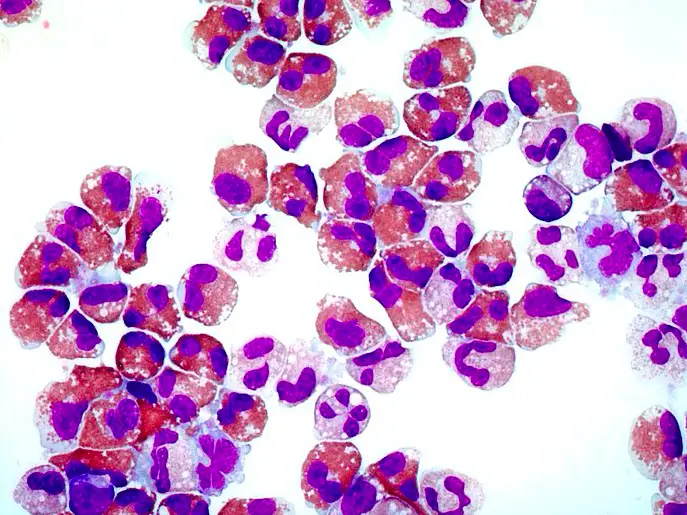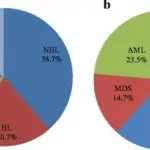Chronic eosinophilic leukemia is a chronic myeloproliferative diesease in which a clonal proliferation of eosinophilic precursor leads to increased eosinophils in blood, bone marrow, or peripheral tissues.
What is the Pathology of Chronic Eosinophilic Leukemia?
The pathology of chronic eosinophilic leukemia is:
-Etiology: The cause of chronic eosinophilic leukemia is unknown.
-Genes involved: Not linked to a specific gene or mutation.
-Pathogenesis: The sequence of events that lead to chronic eosinophilic leukemia is not well characterized.
-Histology: The histology associated with chronic eosinophilic leukemia shows striking eosinophilia in the peripheral blood and hypercellular bone marrow due to eosinophilic proliferation.
How does Chronic Eosinophilic Leukemia Present?
Patients with chronic eosinophilic leukemia typically involve males in the seventh decade of life. The symptoms, features, and clinical findings associated with chronic eosinophilic leukemia include fatigue, cough, dyspnea, myalgia, angioderma, rash, fever, and rhinitis.
How is Chronic Eosinophilic Leukemia Diagnosed?
Chronic eosinophilic leukemia is diagnosed by complete blood count (eosinophil count of at least 1.5 x 109/L ), bone marrow aspiration and biopsy showing hypercellularity with eosinophilic proliferation.
How is Chronic Eosinophilic Leukemia Treated?
Chronic eosinophilic leukemia is treated by using corticosteroids, interferon alfa, and chemotherapeutic drugs such as hydroxyurea, cyclophosphamide, and vincristine.
What is the Prognosis of Chronic Eosinophilic Leukemia?
The prognosis of chronic eosinophilic leukemia is poor. Survival is variable, with median survival of 22.2 months.



